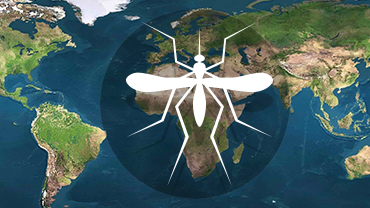Chikungunya worldwide overview
Situation update, May 2024
In 2024 and as of 30 of April, approximately 240 000 CHIKVD cases and over 90 deaths have been reported worldwide.
A total of 18 countries reported CHIKVD cases from the Americas (11), Asia (6), and Africa (1). No new countries reported CHIKVD cases in April.
Three-month Chikungunya virus disease case notification rate per 100 000 population, February-April 2024

Overview
The majority of countries reporting a high CHIKVD burden are in South and Central America. Among these, countries reporting the highest number of cases are Brazil (243 024), Paraguay (3 121), Argentina (382), and Bolivia (268). Additional countries in the Americas reporting CHIKVD cases are listed on PAHO’s dedicated website.
Outside of the Americas, CHIKVD cases were reported in Asia from Thailand (208), India (195), Timor-Leste (195), The Maldives (182), Pakistan (38), and Malaysia (13). One African country reported CHIKVD cases in 2024: Senegal (6).
No autochthonous cases of CHIKVD have been reported in Europe in 2024.
CHIKVD associated deaths were reported from Brazil (99).
Updates from selected countries
An outbreak of CHIKVD is ongoing in the Maldives since March 2024. Since the start of the outbreak and as of 30 April, 182 CHIKVD cases have been reported in the country. The majority of cases have been reported from Malé and Hulhumalé, the most populated islands of the archipelago.
In 2006, the first ever outbreak of CHIKVD was reported in the Maldives. Since then, sporadic cases of CHIKVD have been reported in the archipelago and among travellers returning to the EU/EEA. The last large documented outbreak of CHIKVD cases in the Maldives happened in 2019. During this outbreak, CHIKVD cases were detected in the EU/EEA among returning travellers. Between February 2019 and February 2020, eight cases of CHIKVD were imported into the EU/EEA among travellers returning from the Maldives, corresponding with the period of the last documented outbreak in the archipelago.
ECDC assessment
Chikungunya virus disease and dengue affect people in most countries of the tropics and sub-tropics. EU/EEA citizens travelling to and living in the affected areas should apply personal protective measures against mosquito bites.
The likelihood of onward transmission of dengue and chikungunya virus in mainland EU/EEA is linked to importation of the virus by viraemic travellers into receptive areas with established and active competent vectors (e.g. Aedes albopictus and Aedes aegypti). Aedes albopictus is established in a large part of Europe. In Europe and neighbouring areas, Aedes aegypti is established in Cyprus, on the eastern shores of the Black Sea, and in the outermost region of Madeira.
The current likelihood of the occurrence of local transmission events of chikungunya and dengue viruses in areas where the vectors are present in mainland EU/EEA is low, as the environmental conditions are not yet favourable for vector activity and virus replication in vectors. In 2023, locally-acquired dengue cases were reported by France, Italy, and Spain.
All autochthonous outbreaks of CHIKVD and dengue in mainland EU/EEA have so far occurred between June and November.
N.B: The data presented in this report originates from both official public health authorities and nonofficial sources, such as news media. Data completeness depends on the availability of reports from surveillance systems and their accuracy, which varies between countries. All data should be interpreted with caution and comparisons, particularly across countries, avoided, due to underreporting, variations in surveillance system structure, varying case definitions between countries and over time, and use of syndromic definitions.
Map
Countries/territories reporting Chikungunya cases since May 2023, and as of April 2024
In 2024 and as of 30 of April, approximately 240 000 CHIKVD cases and over 90 deaths have been reported worldwide. A total of 18 countries reported CHIKVD cases from the Americas (11), Asia (6), and Africa (1).







